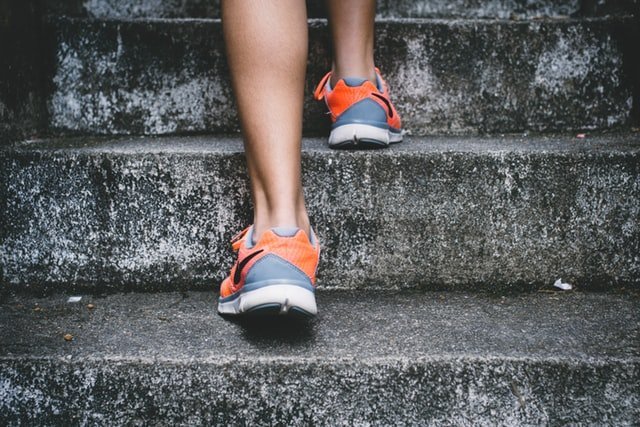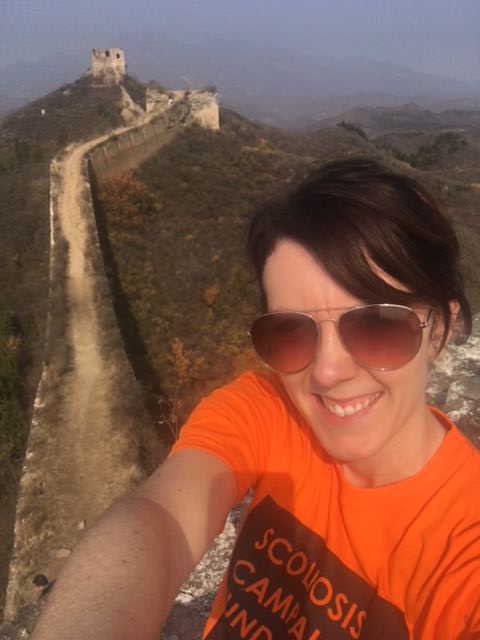
Running with Scoliosis: My Top Tips

This post contains affiliate links.
I have scoliosis and I had spinal fusion surgery in 2010. I am fused T3-L3. About 5 years after my scoliosis surgery, I started getting into running. A friend of mine asked me to run a Race for Life 10K with her. I had never ran before but I decided to support her. At the time, I didn’t have a clue what I was doing, but I followed the training plan and ran my first 10K within 5 weeks. I was so proud of myself and after that, I was hooked. Fast forward to today, I have been running on and off for over 5 years. I’m a member of a run club and have ran over 60 parkruns all over the world. I have ran many races including 7 half marathons (and now, an actual marathon). Over the years, I have learnt a lot about running by surrounding myself with many running experts and coaches. The main question I always get asked is…
Should I be running with scoliosis?
The honest answer is I don’t really know.
I enjoy it, which is why I do it. I love the feeling I get after a run and the endorphins. It’s a great stress reliever and I love the fact that I can do it despite my scoliosis. I also love seeing myself improve and getting fitter and faster – especially because running is something I had always thought I wouldn’t be able to do post scoliosis surgery.
I do find running hard when I’m doing it but the sense of achievement I feel afterwards is addictive. Sometimes I worry that I’m putting pressure on the lower discs in my spine (that are unfused) by running. When I had my final post surgery checkup about a year after my surgery though, I asked my surgeon whether there was anything I can’t do. His answer was no – you can do anything. So that’s exactly what I do…!
I started running 5 years after my scoliosis surgery though. It did feel a bit strange at first and I had to gradually build up to running longer distances by mixing walking and running.
When I joined my run club, I was surprised to meet a fair few people with scoliosis, some of them are very fast as well. This inspires me to keep pushing and never let my back stop me.
My top tips for running with scoliosis
I’m of the opinion that scoliosis shouldn’t stop anyone from running if they want to and feel able. However, scoliosis causes muscle in-balances, which can make those of us with scoliosis more prone to injury. I myself have injured my shoulder muscles and ankle as a result of running and as a result I’m learning to adapt my running and training regime to put less strain on my back. Plus, if it’s painful in any way, you probably shouldn’t do it.
These are a few tips I’ve learnt over the years running with scoliosis (post scoliosis surgery):
Don’t push yourself too hard
This is really important and I learnt this the hard way. It’s important to build up gradually – don’t try to run too far and too fast too soon. I injured my shoulder muscles by pushing myself too hard. I stupidly gave myself a few weeks to train for a 10K race having never ran in my life. Don’t do this!!
If you are used to running, that’s different. But when you have scoliosis you need to be patient with yourself and pushing yourself could cause injury. Try a couch to 5K programme or mix running with walking to start with.
Listen to your body and if your back starts hurting stop or take a rest.
Build up your strength
Having strong muscles is vital for running to prevent injury. This is true for anyone who runs and not just if you have scoliosis. However, scoliosis causes muscle imbalances and running will quickly reveal any weaknesses! Again, I learnt this the hard way and have always been afraid of weights etc in case I damage my back. This was the WRONG thing to do as it left me very weak and vulnerable to injury. I now know that it’s vital to complement running with strengthening exercises such as Pilates or any exercises focusing on the core and glute muscles.
You do not even need to use weights. Simple body weight exercises such as squats/lunges are perfect or, invest in a resistance band and check out my top 10 glute exercises for runners. Try and do strength exercises at least twice a week for 30 mins or so.
Wear decent trainers
Decent trainers can make a HUGE difference to the impact on your spine and help to reduce back pain. My advice would be to get a gait analysis done. Many running shops will offer this service for free. This is important to get the right trainers for you and reduce the risk of injury and pressure on your back. Do not run in trainers that are not designed for running.
Make sure you stretch regularly
This is important for any runner but when you have scoliosis, the muscle in-balances can make your muscles feel extra tight. This is because one side often has to work harder than the other side and as a result the muscles become overworked and tired. I get really tight muscles down one side of my back due to this and a good stretch really helps. I really like the bottom to heels stretch and this Pilates for scoliosis book has some great stretches for scoliosis. Additionally, there are lots of yoga for runners videos on YouTube which you can do pre or post run.
Take rest days and mix it up!
Make sure you rest in between runs. After a 5K or 10K run my lower back DOES hurt and I need a rest. I find if I run 30 or 40 minutes for say two days in a row, my back will start to hurt and my shoulder starts twinging. I’m not sure I could run every day for example. I think it’s the repetitiveness of running that my back muscles don’t like, as I injured my shoulder when I was running almost every day training for a 10K. So I now try to vary my cardio by mixing running with other exercises such as cycling and walking. It’s important to not overdo running and mix it in with other things to reduce the strain on your back muscles.
Don’t compare yourself to others
This is the crucial one! I am so guilty of this. I compare myself to everyone all the time. For example, there’s people who I go to the gym with who can run faster than me and I hate it. I wish I could run as fast as the people at Park Run who can finish a 5K in under 20 minutes. It’s important though to remember your limitations. Running with scoliosis doesn’t mean you can’t run as fast as others but you should pace yourself. And be proud of what you CAN do!
I personally find running fast very difficult and it feels more comfortable on my back when I am jogging at a gentle pace. When I try to go faster I end up hurting myself or feeling pain. Everyone’s different and I am just SO grateful that I can even run 5K, 10K etc, as I never thought it would even be possible.
The important thing when running with scoliosis is to start gradually and build strength in the back, core and legs which will help to build up speed and distance safely over time.
Running is not always about pace, and running at a slower pace is actually better for your body and will improve your endurance and fitness.
If you are new to running, check out my 10 Tips for New Runners. Be sure to follow me on Instagram to keep up with my running adventures!
Do you have scoliosis and do any running?
What are your experiences and have you got any tips? I would love to hear from you – let me know in the comments below 🙂
If you’ve enjoyed this post, please follow me on Instagram, Facebook and Pinterest and subscribe to my YouTube channel! 🙂 I also have a video version of this post below, so check it out and let me know what you think.
Lots of Love,
Louise XXX
Disclaimers:
This article is not intended to substitute for informed medical advice. You should not use this information to diagnose or treat a health problem or condition. Always check with your doctor before changing or starting a new fitness routine.
I accept no responsibility or liability for any injuries caused directly or indirectly through the performing of the exercises described. If you feel any discomfort or pain during any exercise, stop immediately.
If you have recently had scoliosis surgery, speak to your Dr/physiotherapist in order to get tailored exercises for you while you recover. You will need to be very careful and it will probably be difficult to do anything other than walking and simple exercises for a while. (Remember NO bending, lifting or twisting for at least 6 months following scoliosis surgery)

I had scoliosis surgery in 2010 and blog about my experiences living with scoliosis. My aim is to raise awareness of scoliosis and help and inspire others with the condition.

